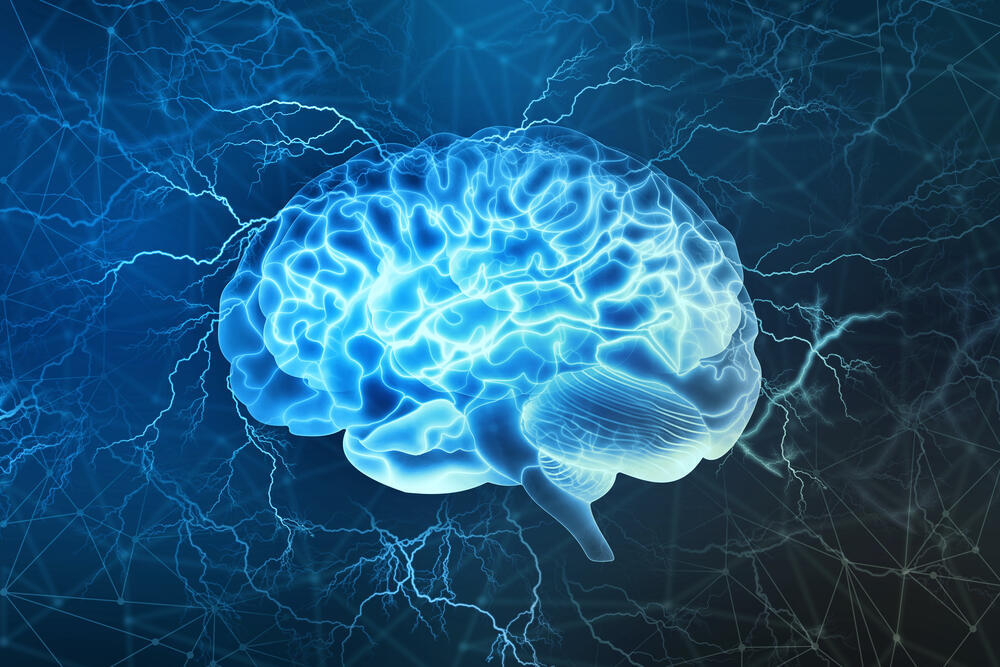Getting your Trinity Audio player ready...
In the late 1960s, a neuroscience lecturer at MIT amused his students with a fictional story: a neurologist helped a patient erase all memories of his mother by performing a procedure that selectively damaged only the nerve cells associated with those memories.
The lecturer mocked the idea that specific nerve cells could store something as complex as the concept of "mother," joking that the neurologist might next study "grandmother cells."
Ironically, "Grandmother cells" has since become an accepted theoretical concept, evolving from a joke into a field of research that deals with the question: can a single nerve cell respond to a complex concept such as a specific person?
Specialized cells required
For many years, the field of neuroscience has focused on understanding how nerve cells are activated and connected to process sensory data, allowing us to interpret and respond to the world around us.
This process, where nerve cells work together to generate a mental representation of the world, process the information and induce a response, is known as "coding."
For example, research on the brain's visual processing area, located in the occipital lobe, has demonstrated that different types of nerve cells code for distinct and specific features of visual stimuli.
One such feature is orientation: researchers have found that different nerve cells respond to visual stimuli arriving from different and specific angles, with each cell type having its own "specialized orientation."
According to this finding, to process a particular image, many cells - each specialized in recognizing and processing different features - must work together, and their combined activity generates the complete image in our brains.
Considering that the information from our surroundings is not only visual but also includes sounds and tactile sensations, it is clear that, according to this concept, an even larger network of cells must cooperate to perform the basic processing of all sensory information that reaches the brain.
This model is not very economical, as it requires a significant number of brain cells to process the complex stimuli we constantly encounter. Additionally, it requires abstract differentiation to identify different objects within the same category, even when their physical features differ.
For example, consider a table. There are many types of tables, varying in size and shape. To recognize an object as a table—whether it is small and round or large and square—requires nerve cells that code for something beyond just the object's physical characteristics.
There is a theory suggesting that identifying and categorizing objects involves nerve cells with even more specific specializations. But what happens in cases like the one described by the MIT lecturer, involving recognition of a specific individual, like Jennifer Aniston, for example? Do we rely on specialized nerve cells to identify her?
Cells following Rachel
"Jennifer Aniston neurons" are specialized nerve cells in the brain that researchers suggest can respond to specific individuals or concepts. These neurons were named after Jennifer Aniston because they were first identified when a cell activated exclusively in response to images of the actress, and not in response to any other stimuli.
In this well-known experiment, scientists worked with epilepsy patients undergoing preparatory assessments for surgical procedures related to their condition. They implanted electrodes deep within the patients' brains to monitor nerve cell activity in the middle temporal lobe, an area associated with explicit memory - memories that can be consciously recalled and verbalized.
During the experiments, patients were shown a range of visual stimuli, including images and videos of familiar figures and media references like The Simpsons, Seinfeld and Jennifer Aniston, known for her role as Rachel on Friends. The researchers found that certain neurons exhibited highly selective responses. They responded to a complex, abstract concept, but only to that specific concept and not to others.
In the famous example, a neuron fired in response to various photos of Jennifer Aniston, irrespective of her attire, pose or background. The same cell showed reduced activity when images included Brad Pitt, Aniston’s former spouse. This cell showed no response when the patient was presented with photos of other celebrities, animals or locations.
A follow-up experiment revealed similar cells that were specifically responsive to other specific concepts, including actor and comedian Steve Carell, Whoopi Goldberg and the World Trade Center.
Operation Grandma
This discovery sparked significant excitement among brain scientists, as it is highly unusual. Could these indeed be the legendary "Grandmother cells?"
Cells specializing in recognizing specific categories of objects, such as faces or hands were recently explained through the concept of sparse coding. Sparse coding refers to an economical response from a small group of neurons.
To simplify this concept, imagine neurons as words. If the brain were a collection of all the words in a dictionary, and we saw an avocado, the words that would “react” would be "green," "round," "food," etc. This specific set of "words"—or returning to reality, nerve cells—explains and defines our experience of the world.
In contrast to the "Grandmother cell" hypothesis, according to which individual neurons specialize in recognizing a particular object or person, the "sparse coding" view describes a pattern of activity that can be measured in terms of time, space and intensity.
In the "sparse coding" view, no single cell is devoted entirely to an avocado, for example, but rather an ensemble of neurons works together to represent a specific concept. When these neurons fire simultaneously, they create the experience of something with multiple features—large or small, near or far, ripe or rotten. This is the essence of "sparse coding."
According to the "sparse coding" view, unlike the "Grandmother cell" hypothesis, our brains do not have neurons that are exclusively dedicated to recognizing and reacting to a single concept.
While a neuron may selectively respond to a very specific stimulus, such as a photo of Jennifer Aniston, it is not restricted to that one stimulus. This idea is supported by numerous findings from studies of place cells - neurons in the hippocampus, a region of the temporal lobe where "Jennifer Aniston neurons" were also identified.
Place cells activate in response to specific locations in the environment; for instance, certain cells fire when we enter our bedrooms, while others become active when we move to the living room or kitchen. Thus far, these cells appear similar to Jennifer Aniston cells in their selectivity, but they respond to specific locations rather than a particular person.
The researchers have demonstrated that a certain set of cells does indeed respond to one specific location in the physical world. However, when two locations are similar or nearby, there are shared neurons that encode both.
For example, if we walk down a street that resembles our own in its features, a set of neurons will be activated that partially overlaps with the set activated when we are on our own street. These findings indicate that the more spatially similar the two locations are, the greater the overlap between the groups of neurons responding to them.
Thus, cells involved in sparse coding do not encode a separate or discrete entity alone, instead, a stimulus is represented in relation to other stimuli, such as two similar stimuli—for example, the street where we live and a similar-looking street.
The brain, therefore, forms a network of associations between related objects. The researchers have demonstrated, for instance, that a cell responding to images of a particular character from the Star Wars franchise also responded to the written name of that character and the image of another character from the same franchise. This may, in fact, be the role of "concept cells" - a term later coined by the researcher who first identified Jennifer Aniston cells.
Jennifer Aniston's contribution to the world, therefore, extends beyond our television screens. Few people have had their name associated with a scientific theory and a type of cell, even if it was later discovered that the process of recognizing complex concepts in the brain works differently than initially thought.
Still, there is no denying that the term "Jennifer Aniston neurons" sounds far more intriguing than "concept cells," which is the term more commonly used today.






